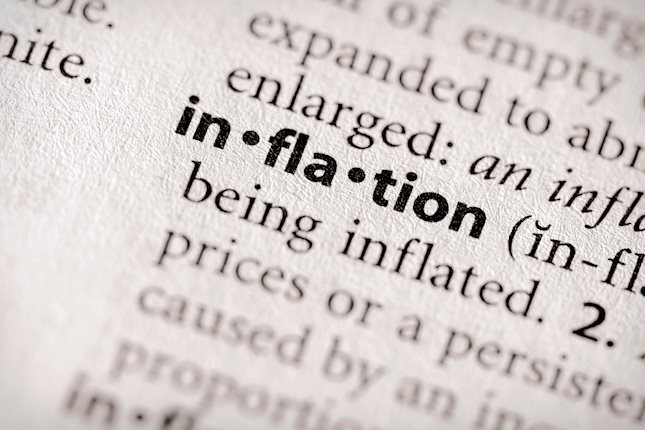Most recent article: India Gold price Friday: Gold pulls back, according to MCX data
Gold prices rose in India on Thursday, according to data from India's Multi Commodity Exchange (MCX).
Gold price stood at 63,412 Indian Rupees (INR) per 10 grams, up INR 446 compared with the INR 62,966 it cost on Wednesday.
As for futures contracts, Gold prices decreased to INR 63,522 per 10 gms from INR 63,678 per 10 gms.
Prices for Silver futures contracts decreased to INR 75,374 per kg from INR 75,647 per kg.
| Major Indian city | Gold Price |
|---|---|
| Ahmedabad | 65,660 |
| Mumbai | 65,410 |
| New Delhi | 65,520 |
| Chennai | 65,650 |
| Kolkata | 65,580 |
Global Market Movers: Comex Gold price capitalizes on dovish Fed pivot
- Comex Gold price is sitting close to a three-week high of $2,089, as a sharper-than-projected decline in the United States core PCE price index data has fuelled bets in favor of early rate cuts by the Fed.
- The US core PCE price index data softened to 3.2% vs. the estimates of 3.3% and the former reading of 3.5%. On a monthly basis, the underlying inflation data grew slightly by 0.1% while market participants projected a steady growth of 0.2%.
- It is worth noting that the Fed forecasted core PCE price index at 3.2% by the year-end in its Summary of Projections (SOP) released last week. This indicates that the Fed has achieved its inflation target of 2023.
- This greater-than-projected decline in the Fed’s preferred inflation tool may force policymakers to endorse rate cuts sooner than previously thought.
- As per the CME Fedwatch tool, market participants are pricing in a more than 75% odds chance of an interest rate cut in March.
- Till now, Fed policymakers have been pushing back rate cut expectations, citing the need for a restrictive interest rate policy for a longer period to ensure the achievement of price stability.
- A significant decline in the US inflation data is setting a better start for the Fed for 2024, which would allow them to achieve a soft landing for the economy. Such a soft landing would enable price stability without triggering a recession.
- Apart from the US core PCE price index data, investors also focused on the Durable Goods Orders for November, released on Friday.
- New orders for durable goods rose at a stronger pace of 5.4% against expectations of 2.2%. In October, orders of durable goods contracted by 5.1%.
- Subsiding inflation in the US economy has boosted consumer confidence. The Michigan Consumer Sentiment index for December, released last week, rose to 69.7, against projections and the former reading of 69.4.
- Deepening rate cut expectations by the Fed have weighed heavily on the US Dollar and Treasury yields.
- Lower interest rates, or their expectation, tend to reduce foreign capital inflows negatively impacting a currency.
- The US Dollar Index hovers near a five-month low below 101.50 and 10-year US Treasury yields have dropped further to near 3.87%.
- This week, the economic calendar will be light due to it being a holiday week while the second-tier weekly jobless claims data will be in focus.
(An automation tool was used in creating this post.)
Gold FAQs
Why do people invest in Gold?
Gold has played a key role in human’s history as it has been widely used as a store of value and medium of exchange. Currently, apart from its shine and usage for jewelry, the precious metal is widely seen as a safe-haven asset, meaning that it is considered a good investment during turbulent times. Gold is also widely seen as a hedge against inflation and against depreciating currencies as it doesn’t rely on any specific issuer or government.
Who buys the most Gold?
Central banks are the biggest Gold holders. In their aim to support their currencies in turbulent times, central banks tend to diversify their reserves and buy Gold to improve the perceived strength of the economy and the currency. High Gold reserves can be a source of trust for a country’s solvency. Central banks added 1,136 tonnes of Gold worth around $70 billion to their reserves in 2022, according to data from the World Gold Council. This is the highest yearly purchase since records began. Central banks from emerging economies such as China, India and Turkey are quickly increasing their Gold reserves.
How is Gold correlated with other assets?
Gold has an inverse correlation with the US Dollar and US Treasuries, which are both major reserve and safe-haven assets. When the Dollar depreciates, Gold tends to rise, enabling investors and central banks to diversify their assets in turbulent times. Gold is also inversely correlated with risk assets. A rally in the stock market tends to weaken Gold price, while sell-offs in riskier markets tend to favor the precious metal.
What does the price of Gold depend on?
The price can move due to a wide range of factors. Geopolitical instability or fears of a deep recession can quickly make Gold price escalate due to its safe-haven status. As a yield-less asset, Gold tends to rise with lower interest rates, while higher cost of money usually weighs down on the yellow metal. Still, most moves depend on how the US Dollar (USD) behaves as the asset is priced in dollars (XAU/USD). A strong Dollar tends to keep the price of Gold controlled, whereas a weaker Dollar is likely to push Gold prices up.
Information on these pages contains forward-looking statements that involve risks and uncertainties. Markets and instruments profiled on this page are for informational purposes only and should not in any way come across as a recommendation to buy or sell in these assets. You should do your own thorough research before making any investment decisions. FXStreet does not in any way guarantee that this information is free from mistakes, errors, or material misstatements. It also does not guarantee that this information is of a timely nature. Investing in Open Markets involves a great deal of risk, including the loss of all or a portion of your investment, as well as emotional distress. All risks, losses and costs associated with investing, including total loss of principal, are your responsibility. The views and opinions expressed in this article are those of the authors and do not necessarily reflect the official policy or position of FXStreet nor its advertisers. The author will not be held responsible for information that is found at the end of links posted on this page.
If not otherwise explicitly mentioned in the body of the article, at the time of writing, the author has no position in any stock mentioned in this article and no business relationship with any company mentioned. The author has not received compensation for writing this article, other than from FXStreet.
FXStreet and the author do not provide personalized recommendations. The author makes no representations as to the accuracy, completeness, or suitability of this information. FXStreet and the author will not be liable for any errors, omissions or any losses, injuries or damages arising from this information and its display or use. Errors and omissions excepted.
The author and FXStreet are not registered investment advisors and nothing in this article is intended to be investment advice.
Recommended content
Editors’ Picks

EUR/USD trades deep in red below 1.0300 after strong US jobs report
EUR/USD stays under bearish pressure and trades below 1.0300 in the American session on Friday. The US Dollar benefits from the upbeat jobs report, which showed an increase of 256,000 in Nonfarm Payrolls, and forces the pair to stay on the back foot heading into the weekend.

GBP/USD drops toward 1.2200 on broad USD demand
GBP/USD extends its weekly slide and trades at its weakest level since November 2023 below 1.2250. The data from the US showed that Nonfarm Payrolls rose by 256,000 in December, fuelling a US Dollar rally and weighing on the pair.

Gold ignores upbeat US data, approaches $2,700
Following a drop toward $2,660 with the immediate reaction to strong US employment data for December, Gold regained its traction and climbed towards $2,700. The risk-averse market atmosphere seems to be supporting XAU/USD despite renewed USD strength.

Sui bulls eyes for a new all-time high of $6.35
Sui price recovers most of its weekly losses and trades around $5.06 at the time of writing on Friday. On-chain metrics hint at a rally ahead as SUI’s long-to-short ratio reaches the highest level in over a month, and open interest is also rising.

Think ahead: Mixed inflation data
Core CPI data from the US next week could ease concerns about prolonged elevated inflation while in Central and Eastern Europe, inflation readings look set to remain high.

Best Forex Brokers with Low Spreads
VERIFIED Low spreads are crucial for reducing trading costs. Explore top Forex brokers offering competitive spreads and high leverage. Compare options for EUR/USD, GBP/USD, USD/JPY, and Gold.